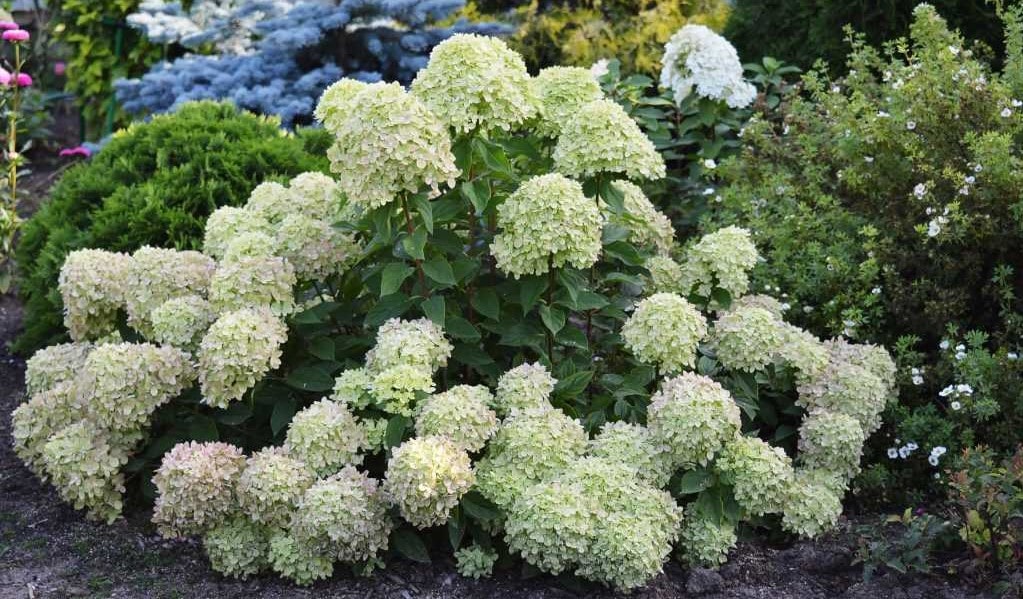Little Lime Hydrangea looks luxurious and is in no way inferior to other representatives of this species. It is noteworthy that no one purposefully conducted selection work on the variety.
The plant turned out as if “by itself”. The round bush is not wide, and its height is 0.7-0.8 m. Chic flower hats are located on top. Supports for them are strong shoots.
In the description of the Little Lime Hydrangea tree, one cannot ignore the fact that this culture can be severely affected by gusts of wind.
At the same time, she willingly masters open areas flooded with the sun. Brushes with flowers reach a large size.
Little Lime Hydrangeas are characterized by a light lime green color. Under the bright sun, the petals will gradually turn white.
In autumn, the Little Lime Hydrangea tree will turn greenish again, and it will be easy to notice the pink edge. Flowering is exceptionally lush – to find the leaves, you have to try.
Landscape designers note that “Little Lime” is ideal for an alpine slide or a simple medium-sized plot. The leaves look like an egg and are painted in the usual green tone. The velvety of the leaf plates and the pleasant sensations it leaves are noted.
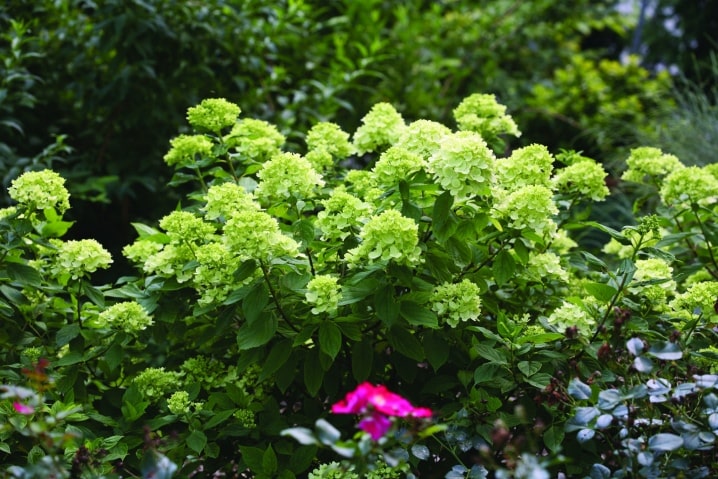
Inflorescences are like a pyramid, rounded from above. Flowering begins in mid-June and continues until the onset of cold weather. Shading almost does not lead to a change in color, but the bush becomes looser.
“Little Lime Hydrangea” is resistant to cold and can survive in the middle lane without special protective measures. The visual characteristics of this variety allow it to be used in the design of hedges.
Table of Contents
Planting Little Lime Hydrangea Tree
It is recommended to plant Little Lime Hydrangea in early spring. The flower needs the sun, but direct sunlight is impractical.
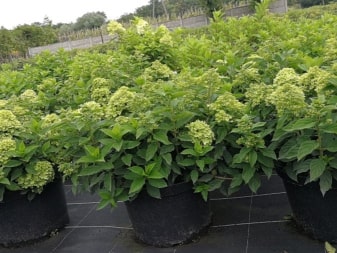
Important: the plant requires a lot of moisture. The excavation for planting should be done at a shallow depth, taking care of good drainage.
Before planting Little Lime Hydrangeas, the ground must be thoroughly fertilized. Immediately after planting, the flower is intensively watered, and mulching with sawdust will help keep moisture in the ground.
The best soil is slightly moist and acidic. For soil acidification use:
- sawdust from coniferous trees;
- whey;
- peat.

Gardeners consider the south side of the site where the shading is small to be the best place to grow “Little Lime Hydrangea tree”.
It is also impractical to plant a crop under large trees – there the bush will lose its beauty.
Important: Little Lime Hydrangea varieties should not be planted near any buildings. Falling icicles or snow falling from the roof, a swift stream from the gutter in the rain can break delicate flowers. Landing in soil containing an excess amount of lime is categorically unacceptable.
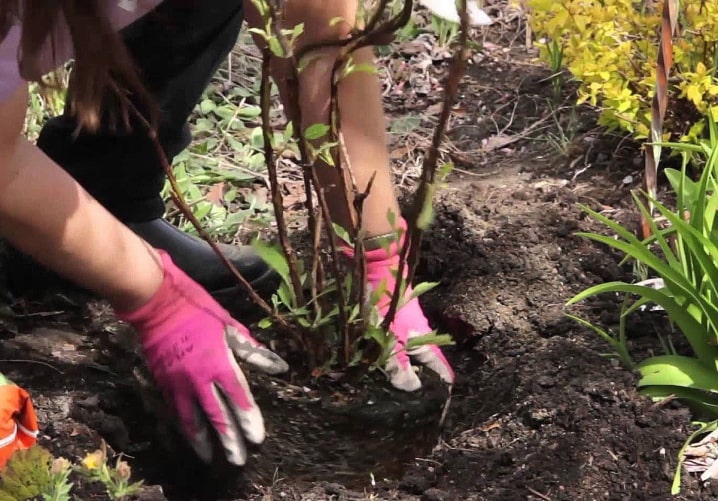
Care for Little Lime Hydrangea Tree
When the Little Lime Hydrangea tree reaches the age of 3 years, mulching is no longer required. Having grown, it will provide shade for itself and retain moisture. However, if extreme heat and drought set in, mulch should still be used.
Strong, straight-growing branches eliminate the need for auxiliary supports. Young hydrangeas are required to cover before the start of each winter.
Young Little Lime Hydrangea tree should be watered very abundantly. For her, moisture and looseness of the earth in a circle near the stem are especially important.
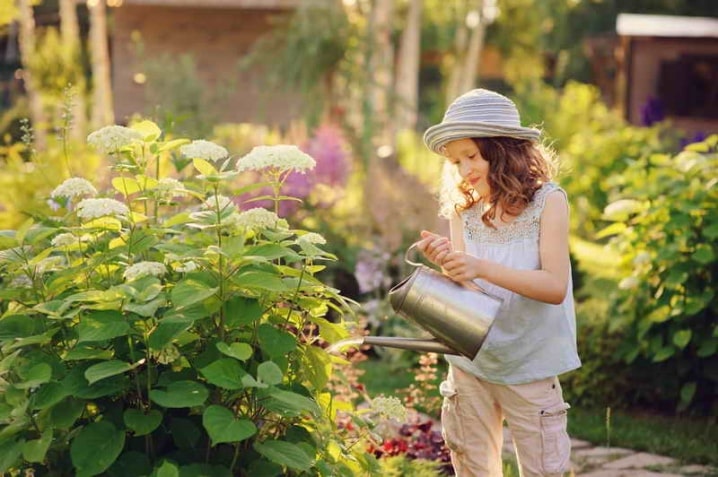
The first feeding is done immediately after the snow melts. To do this, it is recommended to use a slurry. The second time, it is necessary to feed the bush with useful substances against the background of the ripening of the buds.
Then potassium superphosphate, as well as urea, are laid in the ground. Noticing that “Little Lime Hydrangea” begins to bloom profusely, the flower must be fed with mineral compounds.

In the last days of August, it is required to use a special composition for feeding Little Lime Hydrangeas. Before this, you need a neat pruning of the plant for:
- improving the sanitary condition of the culture;
- giving it the necessary form;
- bush rejuvenation.
Sanitary pruning, like molding, should be carried out in the spring before the buds have time to come to life. Little Lime Hydrangea rejuvenation is done in September or October.
Without this procedure, it is difficult to expect the appearance of healthy and strong young shoots in the spring. After all, the forces of the plant will then go to the barren nourishment of the faded parts.

Be sure to remove all diseased and broken branches. By pruning the main shoots, the growth on the sides is activated. During flowering, the smallest unpromising inflorescences are removed.
Protection of the roots of “Little Lime Hydrangea tree” is mandatory in those places where there is not enough snow, and there is a risk of soil freezing. It will be useful in other regions as well. The optimal layer of protective mulch is 0.1-0.2 m.
Branches at the end of autumn are tied like bundles and pressed to the ground. It is also recommended to cover them with spruce branches or build a frame covered with old bags; Modern non-woven materials can serve as an alternative to burlap.
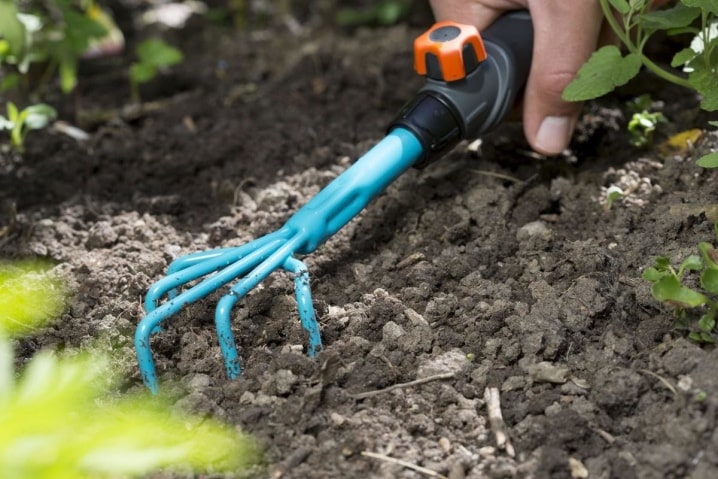
It is important to remember that Little Lime Hydrangea loves water. Specifically, this variety is watered every 7 days, spending 20 liters of water.
It is not recommended to use more liquid even against the background of drought. If there is a lot of precipitation, irrigation is reduced or even completely stopped. After each watering or rain, the soil is loosened to a maximum of 0.06 m in depth, while weeding the plantings.
Some gardeners believe that Little Lime Hydrangeas should be fed every 14 days. They alternate mineral and organic supplements:
- urea;
- superphosphate;
- potassium nitrate;
- ammonium nitrate;
- manure diluted with water.
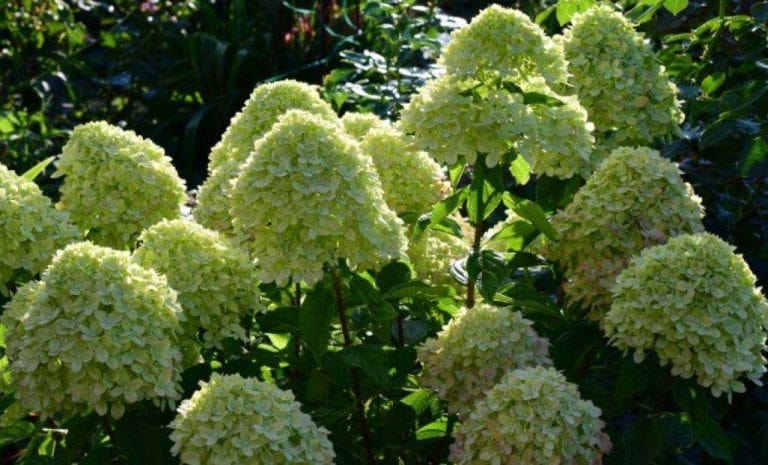
It is noted that such top dressing has a positive effect on the condition of the plant. The intensity of flowering and the brightness of the buds increase.
Some flower growers believe that when cold weather approaches, the ground around Little Lime Hydrangea tree should be spudded by 0.3 m.
Reproduction Methods
Cuttings are recognized as the best option for propagating Little Lime Hydrangeas. Cut branches are placed in water for 5-7 days.
Further, a stalk is formed from them, containing 3 or 4 internodes. From below, the cut is processed by a growth accelerator.
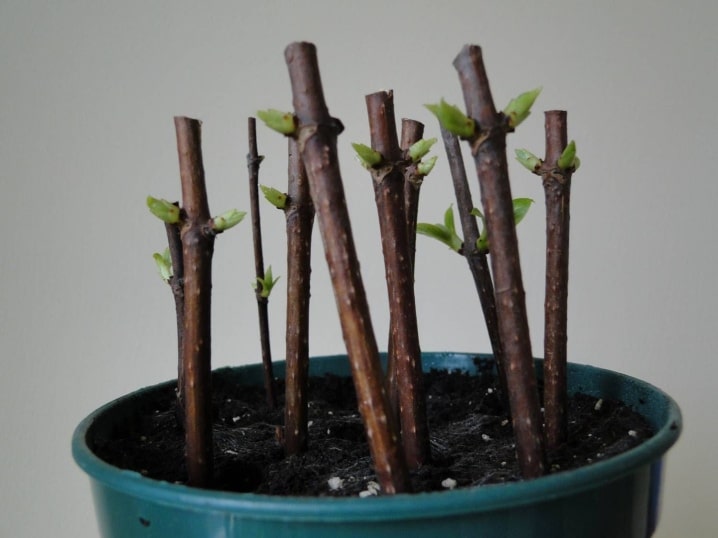
The Little Lime Hydrangea cuttings are planted in artificial soil, consisting of the same amount of peat and washed, calcined river sand. In such soil, planting material is planted before the start of the next season.
After waiting for sufficient warming of the earth, you can immediately plant Little Lime Hydrangeas in the place allotted for them. Due to old age, the bush has to be divided every 5-6 years. To do this, carefully separate some parts of the plant so that it has roots.
It is desirable to damage the segment as little as possible. The cut strip is sprinkled with wood ash or crushed coal; to improve the health of the seedling, it is watered with water with potassium permanganate.
Diseases and Pests

“Little Lime Hydrangea” is considered more resistant to ailments than other Hydrangeas. But the role of prevention is still great. As soon as signs of powdery mildew are noticed, the shrub is disinfected with diluted vitriol. For this, a solution of copper sulfate is mixed with a solution of laundry soap.
Important: if the infection is very strong or spreads quickly, branded fungicides must be used. Home remedies will not help in such a situation.
Having noticed tracheomycotic wilt, there is nothing left but how to get rid of the affected shoots. All incisions are disinfected with potassium permanganate. To avoid contamination of the land with various ailments, it is mulched with a mixture of ash and powdered sulfur. To combat harmful insects, any insecticides suitable for the spectrum of action are used.

There are also dangers:
- white rot;
- chlorosis;
- gray rot (fungicides will help suppress all three diseases).
Of the harmful creatures, the Little Lime Hydrangea is attacked by:
- snail;
- aphid;
- bug;
- weevil.

